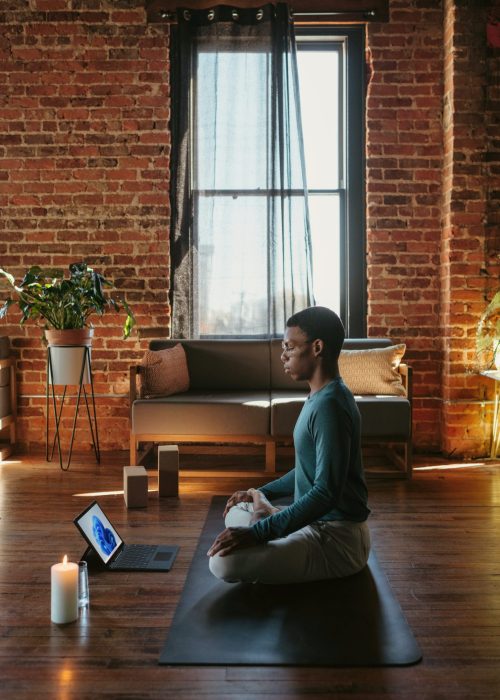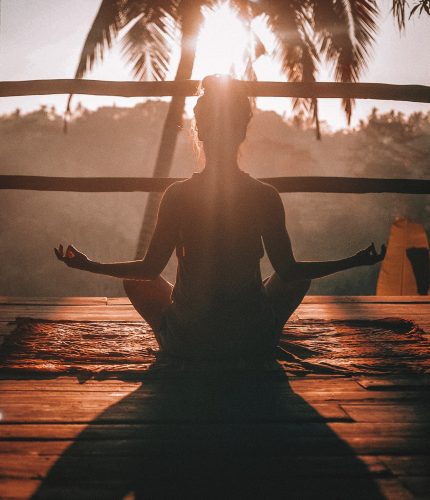Discover the profound connection between breathwork and well-being as we explore its transformative power in enhancing mental and physical health.

The relationship between the mind, body, and breathwork is intricately intertwined, with growing evidence supporting the idea that breathwork possesses the potential to positively impact mental and physical well-being. Various studies show that incorporating deliberate breathing exercises into your routine can activate the parasympathetic nervous system, alleviating stress and promoting relaxation. To quote Deepak Chopra, “Breath is the bridge that connects life to consciousness, the doorway to our essence. It holds the key to unlocking our deepest potential for healing, transformation, and self-discovery.”
“Efficient breathing means that fewer free radicals are produced, reducing the risk of inflammation, tissue damage, and injury.”
Patrick McKeown, Author of: The Oxygen Advantage


“Efficient breathing means that fewer free radicals are produced, reducing the risk of inflammation, tissue damage, and injury.”
Patrick McKeown, Author of: The Oxygen Advantage
In Patrick McKeown’s book, The Oxygen Advantage, he highlights that efficient breathing “means fewer free radicals are produced, reducing the risk of inflammation, tissue damage, and injury”. A 2021 study on pranayama, a form of yogic breathwork, demonstrated that practicing it for just a few minutes daily, over six weeks, improved the overall well-being among participants. Moreover, a 2020 systematic review of 28 studies confirmed that slow breathing techniques significantly lowered blood pressure in individuals with hypertension. Moreover, a 2022 systematic review found that BET [Breathing Exercising Techniques] intervention significantly decreased pain and anxiety in burn patients.
On my podcast, breathwork coach and author— Richie Bostock, also known as the Breath Guy, expresses that breathwork is the next health and fitness revolution, captivating listeners with powerful stories of breakthroughs observed in both individual and group sessions. He firmly believes that breathwork serves as a potent tool for managing challenges and realigning with our true selves.
Breathe, release, and realign
Comparing the emotional density we hold in our bodies to a bucket, Bostock says that “everyone’s buckets are at the top [level], or spilling over. And that’s where breathwork can be useful in two ways:” firstly, it offers a way to effectively manage and release emotional density, allowing for a greater sense of ease. Secondly, he highlights the power of breathwork to relax the nervous system, reducing the impact of stress and promoting overall relaxation. He recommends integrating the practice into our daily routines through simple two or three-minute techniques, which can serve as valuable moments of self-care.
If you need more convincing, a 2023 study demonstrated the positive impacts of breathwork on mood enhancement and anxiety reduction, and highlighted its potential benefits. For those seeking deeper releases and transformations, engaging in longer breathwork sessions lasting 30 minutes to an hour can unlock profound emotional and energetic shifts, says Bostock.
Also listen to: Energy Healing featuring Dr Devanshi Kapadia
Unlocking the healing power

“No matter what you eat, how much you exercise, how skinny or young or wise you are, none of it matters if you're not breathing properly.”

“No matter what you eat, how much you exercise, how skinny or young or wise you are, none of it matters if you're not breathing properly.”
James Nestor’s book, Breath: The New Science of a Lost Art, sheds light on the pivotal role of proper breathing in our overall health and well-being. He says that “no matter what you eat, how much you exercise, or how wise you are, none of it matters if you’re not breathing properly.” In his book, Nestor delves into the science and history of breath, revealing how modern lifestyles and habits have led to a decline in our breathing efficiency. He explores the potential benefits of conscious breathwork, highlighting its ability to optimise oxygen intake, reduce stress, improve sleep quality, enhance mental clarity, and promote overall vitality.
Nestor’s insights align with the growing body of research that highlights the profound impact of breathwork on various aspects of our well-being.

"The way that we breathe affects every single system and every single function in the body."
Richie Bostock, breathwork coach and author

"The way that we breathe affects every single system and every single function in the body."
Richie Bostock, breathwork coach and author
Bostock takes a step further and talks about how breathwork halted the progression of multiple sclerosis in his father. “You can do fantastic things with breathwork”, he says. Several studies have confirmed that breathwork can unlock incredible physiological benefits. A 2022 study revealed that diaphragmatic breathing exercises can effectively reduce symptoms of gastric reflux in patients with digestive diseases, for instance.
For migraines specifically, Bostock recommends the butterfly breath technique—a gentle, seamless, and continuous circular breath through the nose, absent of pauses, characterised by softness and subtlety. This technique can be practised for 30-45 seconds in a secure and distraction-free environment.
The butterfly breath technique, also known as Kapalabhati or Skull Shining Breath, is a dynamic breathing practice commonly used in yoga and pranayama. Here’s a step-by-step guide on how to perform the butterfly breath technique:
- Find a comfortable seated position: Sit on a chair or cross-legged on the floor, keeping your spine upright and relaxed.
- Relax your hands: Place your hands on your knees or thighs, palms facing upward or downward, whichever feels more comfortable.
- Take a deep inhalation: Inhale deeply through your nose, expanding your belly and filling your lungs with air.
- Forceful exhale: Exhale forcefully and quickly through your nose, drawing your navel in towards your spine. This exhalation should be sharp and powerful, allowing your abdomen to contract rapidly.
- Passive inhalation: Allow the inhalation to happen naturally and passively without any effort. Focus on the relaxation and release of the abdomen as it expands naturally.
- Repeat the cycle: Continue this rhythmic pattern of forceful exhalation and passive inhalation. The exhalation should be quick and active, while the inhalation is gentle and passive.
- Gradually increase the pace: Start with a comfortable speed and gradually increase the pace as you become more familiar with the practice. Maintain a steady rhythm throughout the exercise.
- Duration: Begin with a few rounds of 10-15 breaths and gradually increase the duration as you progress. You can aim for 2-3 minutes initially and extend it based on your comfort level.


- Find a comfortable seated position: Sit on a chair or cross-legged on the floor, keeping your spine upright and relaxed.
- Relax your hands: Place your hands on your knees or thighs, palms facing upward or downward, whichever feels more comfortable.
- Take a deep inhalation: Inhale deeply through your nose, expanding your belly and filling your lungs with air.
- Forceful exhale: Exhale forcefully and quickly through your nose, drawing your navel in towards your spine. This exhalation should be sharp and powerful, allowing your abdomen to contract rapidly.
- Passive inhalation: Allow the inhalation to happen naturally and passively without any effort. Focus on the relaxation and release of the abdomen as it expands naturally.
- Repeat the cycle: Continue this rhythmic pattern of forceful exhalation and passive inhalation. The exhalation should be quick and active, while the inhalation is gentle and passive.
- Gradually increase the pace: Start with a comfortable speed and gradually increase the pace as you become more familiar with the practice. Maintain a steady rhythm throughout the exercise.
- Duration: Begin with a few rounds of 10-15 breaths and gradually increase the duration as you progress. You can aim for 2-3 minutes initially and extend it based on your comfort level.
It’s important to note that the butterfly breath technique may not be suitable for everyone, especially if you have certain respiratory conditions or medical concerns. If you are new to this technique or have any underlying health issues, it is advisable to learn it under the guidance of an experienced teacher or consult with a healthcare professional before practising it independently.
Also listen to: Hyperbaric Oxygen Chamber featuring Jaynee Treon
Breathe. Chant. Find Balance
In the book A Practical Guide to Breathwork— author Jesse Coomer says “Breathing communicates with your body”. When this practice is combined with chanting, it creates a powerful synergy that can have a profound effect on the mind, body, and spirit, says yoga therapist— Suprieya Kutty on my podcast. She explains that this happens because each practice works on different aspects. She recommends taking a few minutes out everyday for a little breathwork and chanting, because “there is no substitute for ‘abhyasa’ or practice.” Daily practice creates a sense of peace and tranquillity, with strong scientific evidence pointing towards ‘mantra meditation’ showing positive effects in relieving stress and in coping with hypertension.
The profound impact of breathwork on our well-being is evident, and integrating simple techniques into our daily routines can help experience moments of self-reflection that release emotional density and help us to truly relax. I highly recommend embracing breathwork as a daily practice – this, in my view, is the route to balance and harmony.

